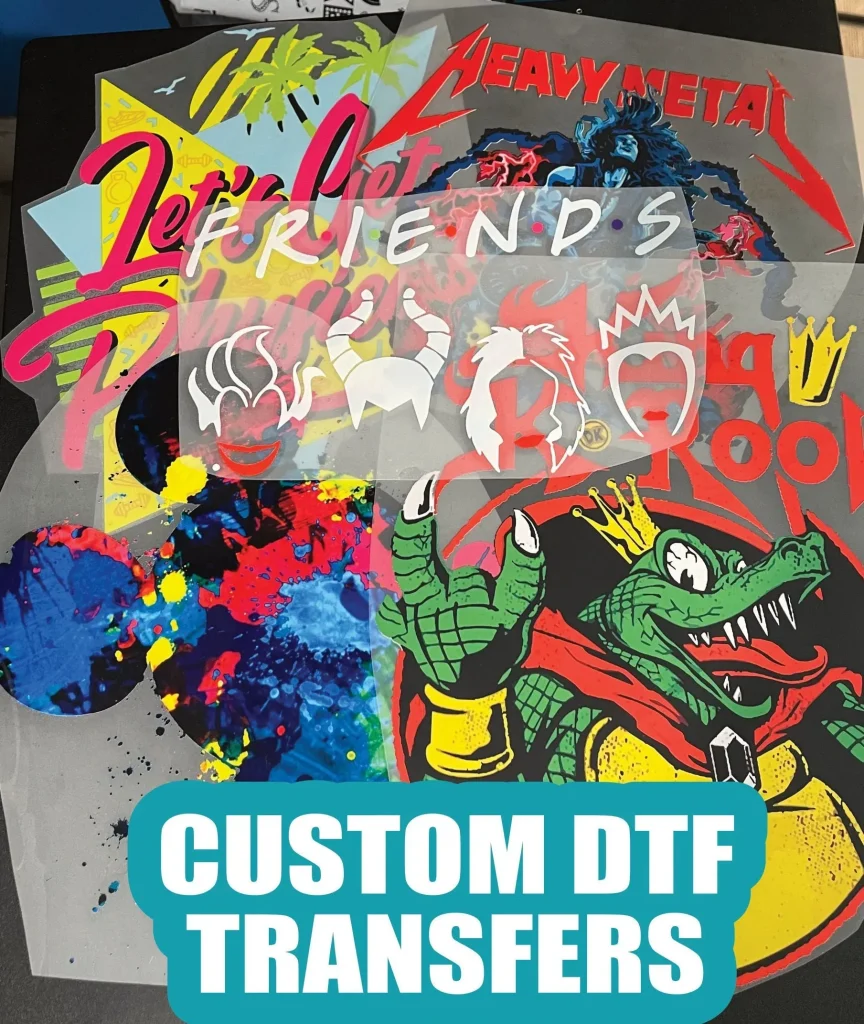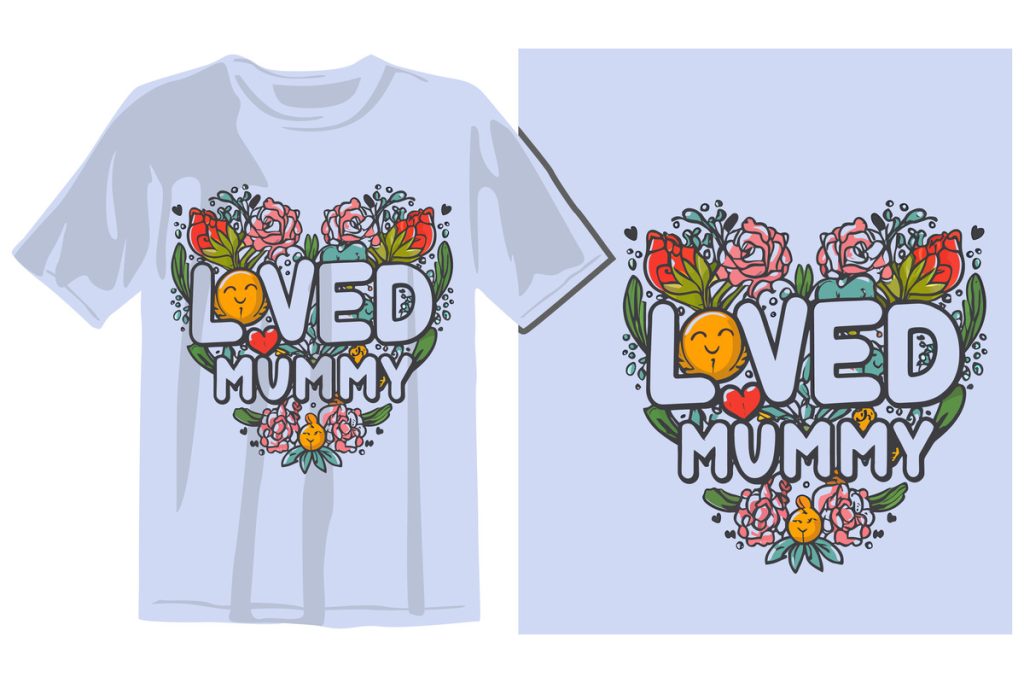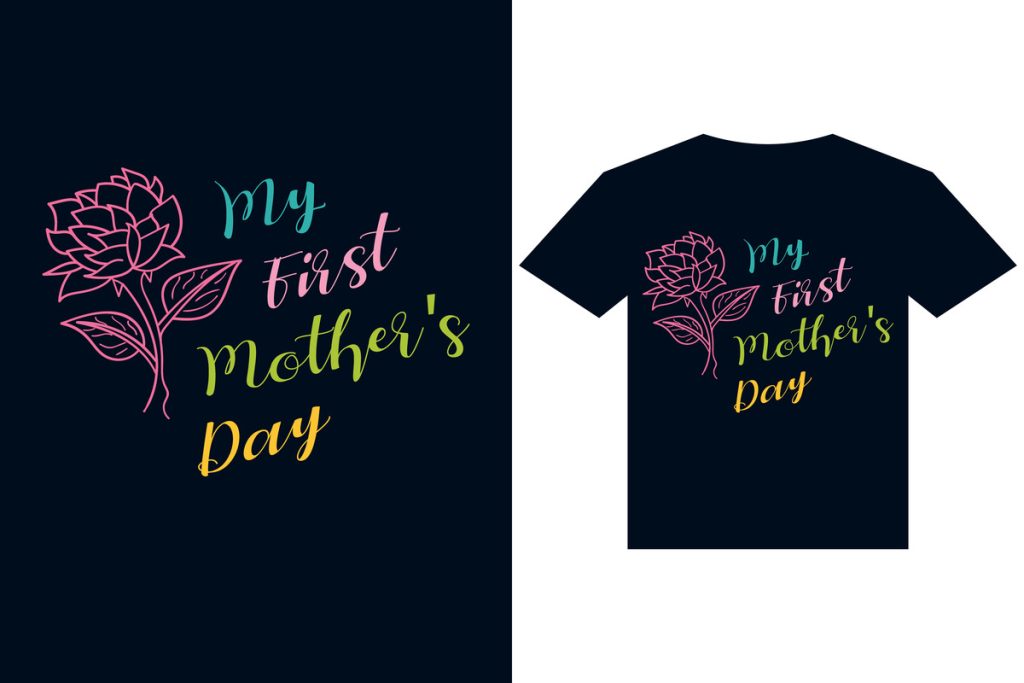DTF transfers, or Direct-to-Film transfers, are revolutionizing the custom apparel printing industry by offering a user-friendly approach to creating high-quality designs. This innovative printing method allows both beginners and experienced printers to achieve vibrant, detailed images on a variety of fabrics with minimal effort. As you start your journey into DTF printing, understanding the fundamentals of the DTF transfer process is essential for success. In this comprehensive DTF printing guide, we’ll cover everything from the necessary equipment to beginner DTF techniques, ensuring you have the knowledge needed to create stunning custom designs. With just a few tips and some practice, you can master the art of DTF transfers and elevate your printing game.
Direct-to-Film transfers, often abbreviated as DTF, provide an exciting gateway for those interested in custom garment design and textile printing. This technique enables aspiring printers to seamlessly transfer intricate images onto fabrics, offering an appealing alternative to traditional methods. If you’re curious about how to start DTF printing, you’ll find that it combines vibrant color applications with ease of use, catering perfectly to both hobbyists and professional entrepreneurs. In this introductory exploration, we will guide you through essential concepts and beginner techniques related to the DTF transfer process. Prepare to delve into the world of custom DTF printing where creativity knows no bounds!
Understanding DTF Printing Basics
Direct-to-Film (DTF) printing has gained traction as an accessible method for creating custom apparel. The essence of DTF printing lies in its methodical approach, where intricate designs are first printed onto a specialized film before being transferred onto the fabric. This technique provides versatile applications across various fabrics, ensuring that both novice and experienced printers can achieve professional results. The process not only caters to custom designs but also allows for rapid production, particularly useful for small businesses or hobbyists.
For beginners, understanding these basic principles is essential. Familiarizing oneself with the terminology and equipment associated with DTF printing can demystify the process. Investing time in reading DTF printing guides, joining forums, and watching tutorials can significantly enhance one’s ability to utilize this method effectively. As you dive deeper into the DTF printing world, these foundational concepts will serve as the bedrock of your entrepreneurial or crafting endeavors.
Essential Equipment for DTF Transfers
Before embarking on your DTF printing journey, assembling the right equipment is critical. The primary item you’ll need is a DTF printer, which is specifically designed to handle DTF inks and films. Ensuring compatibility with your selected DTF ink is paramount, as this will directly influence the vibrancy and durability of your prints. Alongside the printer, you’ll require specialized DTF film, which is engineered to work in tandem with the ink, allowing for smooth and accurate transfers.
Additionally, having a reliable heat press is non-negotiable. The heat press applies the necessary temperature and pressure needed for transferring the design onto the fabric. Quality heat presses come with adjustable settings that ensure optimal results for different fabric types. Lastly, adhesive powder plays a crucial role in ensuring the ink adheres smoothly to the fabric during the transfer process. By investing in high-quality equipment, beginners can avoid common pitfalls that lead to unsatisfactory results.
Step-by-Step DTF Transfer Process
The DTF transfer process can be broken down into manageable steps, making it approachable for beginners. Start with creating your design; software like Adobe Illustrator is favored for its robust features that allow for vibrant, high-resolution graphics. Once you have your design, print it onto the DTF film using your specialized printer. Ensure that you select the highest-quality print settings to maximize the potential of your design.
After printing, the next step is to apply adhesive powder while the ink is still tacky. This step is crucial for ensuring a successful bond between the ink and the fabric during the heat transfer. Following the application of adhesive powder, curing the print is necessary to create an initial bond. Lastly, when you transfer your design onto the fabric—remember to remove the film while it’s warm, as this aids in the peeling process and ensures a smoother finish. By following these steps closely, beginners can achieve excellent results quickly.
Benefits of DTF Transfers for Custom Printing
DTF transfers offer a myriad of benefits, appealing to both amateur and professional printers. One of the standout advantages is versatility; DTF transfers can be applied to a wide range of materials including cotton, polyester, and various blends. This adaptability allows for creativity in custom apparel design, making DTF a preferred choice for many. Moreover, the prints produced are not only vibrant but also possess high durability, resisting the common wear and tear seen in other printing methods.
Another significant benefit is the beginner-friendly nature of DTF printing. Unlike traditional screen printing, which may require substantial technical knowledge and experience, DTF printing techniques can be learned relatively quickly through practice and experimentation. Additionally, since you can print on-demand, there’s a cost-effective aspect that reduces the need for maintaining large inventories, appealing directly to small businesses looking to minimize operating costs.
Getting Started with DTF Transfers: Tips for Success
Embarking on your DTF printing journey can be rewarding, especially when armed with practical tips for success. One of the most important pieces of advice is to invest in high-quality materials. Products such as DTF films and inks can greatly affect the final output of your prints. Beginners often overlook this aspect, leading to disappointing results that could deter them from continuing. It’s advisable to source supplies from reputable vendors and to seek recommendations from experienced printers.
Moreover, practice is a crucial element in mastering DTF printing techniques. Experiment with different designs and fabric types to gain confidence and understand the nuances of the process. Joining online communities focused on DTF printing can also provide support, tips, and troubleshooting assistance, making it a valuable resource as you learn. With the right approach and a willingness to experiment, you’ll quickly improve your DTF printing skills.
Common Mistakes to Avoid in DTF Printing
As with any printing process, beginners to DTF printing should be aware of common pitfalls that can affect their results. One frequent mistake is underestimating the importance of a high-quality print setup. Using low-quality inks or films can compromise the final product, leading to faded colors and weak transfers. It’s essential to commit to investing in reliable equipment that complements the DTF process for optimal outcomes.
Another common error is neglecting the curing phase after applying adhesive powder. Failure to cure the print correctly can result in poor adhesion, leading to designs that peel or crack after washing. Making sure to follow instructions carefully at each step of the DTF transfer process will significantly enhance the quality and longevity of your prints. By being mindful of these mistakes, you can set yourself up for success in DTF printing.
Frequently Asked Questions
What are the essential steps in the DTF transfer process?
The DTF transfer process involves several key steps: First, create your design using graphic software. Then, print it onto DTF film utilizing a DTF printer. After printing, apply adhesive powder to the wet ink, cure the print with heat, then use a heat press to transfer the design onto your fabric. Lastly, peel away the film to reveal your graphic.
How can beginners start DTF printing effectively?
Beginners can start DTF printing by familiarizing themselves with the required equipment, such as a DTF printer, DTF film, and a heat press. Next, follow a beginner DTF techniques guide to learn the process from designing to transferring. Practicing with quality materials and engaging in DTF printing communities can also enhance skills and confidence.
What equipment is necessary for custom DTF printing?
To begin with custom DTF printing, you will need a DTF printer for printing images onto film, high-quality DTF inks, specially coated DTF film, an effective heat press for transferring, and adhesive powder to bond the prints onto fabric. Proper equipment is key to achieving vibrant and durable prints.
Can DTF transfers be used on all fabric types?
Yes, DTF transfers are versatile and can be applied to a variety of fabrics, including cotton, polyester, and blends. This adaptability makes DTF printing an excellent option for custom apparel across different textile types.
What advantages do DTF printing methods offer for custom designs?
DTF printing methods offer several advantages, including vibrant colors, fine detail reproduction, and durability against fading or cracking over time. Additionally, they are beginner-friendly compared to traditional methods like screen printing, making them a cost-effective choice for custom design needs.
How do I ensure the quality of my DTF transfers?
To ensure the quality of your DTF transfers, use high-resolution designs and maintain quality control of materials such as DTF films and inks. Following the DTF transfer process meticulously, including proper curing and pressing techniques, will also help achieve professional-quality results.
| Key Points |
|---|
| DTF transfers involve printing on a special film which is transferred to fabric using a heat press. |
| Essential equipment includes a DTF printer, DTF film, DTF ink, a heat press, and adhesive powder. |
| The process involves designing, printing, applying adhesive, curing, transferring to fabric, and removing the film. |
| Benefits include versatility on various fabrics, high-quality prints, durability, ease of learning, and cost-effectiveness. |
| Tips for beginners include investing in quality supplies, practicing regularly, and engaging with online communities. |
Summary
DTF transfers are revolutionizing the custom printing industry by providing a straightforward method to create vibrant, durable designs on fabric. This beginner-friendly approach allows individuals and businesses alike to efficiently produce high-quality custom apparel. With the necessary equipment and an understanding of the step-by-step process, anyone can dive into the world of DTF transfers and unlock their creative potential. By emphasizing versatility and quality, DTF transfers stand out as an attractive option for textile printing enthusiasts.



